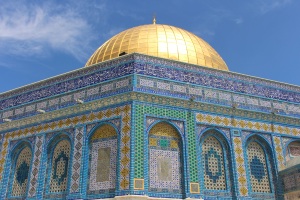The European Union was founded on principles of social democracy. Rooted in the Christian principles of “Rerum Novarum” the European experiment used to sit comfortably between the extreme worlds of US Capitalism and Russian Communism. It offered a particular type of bargain, with protections for those at the bottom of society, and controls on rampant exploitation of people and workers.
In any politically led economic system we find politicians struggling to make sense of the complex interplay of economic factors. A populist politician is unlikely to have a PhD in economics. When politicians run into a capability gap they rely on specialist advisers.
Ideally these advisers should be free of vested interests, and should give dispassionate counsel. At the most senior levels of the EU, and the respective national governments, we are seeing a different dynamic at play.
In the USA the nickname for the Treasury Dept in the Whitehouse is Government Sachs or the “Goldman Sachs” dept, referring to the large number of treasury secretaries from that investment house. If you recruit stockbrokers to run government they create policies that favour the interests of big finance. They push for lower corporate taxes, they cut welfare, government spending and reduce government regulation of industry.
These are exactly the forces we are seeing now in the European Union. The post 2007 austerity programme was a philosophy designed by bankers for bankers. For the average European the austerity programme has been a failure. For bankers it has been an unqualified success. The banking sector has recovered from near collapse, and the recovery has been paid for by ordinary citizens.
At last the Greeks have called time on the troika of the IMF, ECB and the European Commission. Syriza was elected into power in Greece on an anti-austerity ticket. That should have been a warning signal to the troika. Instead of heeding the warning they blithely drove forward with their programme to steamroll the Greeks into paying banks back for bad loans.
The troika have tried and tried again to bully Tsipiras and his party into submission. In response the Greek premier pulled out the most potent weapon in his arsenal “Democracy”. He is resorting to the will of the people to gauge their support for his non-cooperation with the austerity agenda.
This does not sit at all well with the “Goldman Sachs” style banking & stockbroking mandarins who currently drive EU economic policy. They are not accustomed to having their policies questioned even by politicians. The concept of populist support is anathema to them. They have no time for debt forgiveness or for wishy-washy neo-Keynesian economic policies.
The democratic prerogative should be no stranger to the politicians in the European Commission, the Council of Europe and the European Parliament. These are the people we have elected and appointed to guard the interests of the ordinary people of Europe. These are the people who are failing. They have given over too much power to the vested interests.
A thin understanding of economics is no excuse for the abrogation of responsibility that we see in the politicians in Europe. The Greeks will speak on Sunday. I expect them to come back with a resounding no, OXI!
Then we need to understand how we can help the economy at the bottom of our EU society. This is Europe, not the USA. This is about unification and inclusion, not about punishment and exclusion.
It is time to fix the EU model.
If you fancy an additional good read on this subject check out this link: The Austerity Delusion
-=o0o=-
This site is available for free and I make no money from any ads you see here. If you would like to show your appreciation feel free to leave a comment or you can buy me a coffee! http://buymeacoffee.com/DonalClancy











